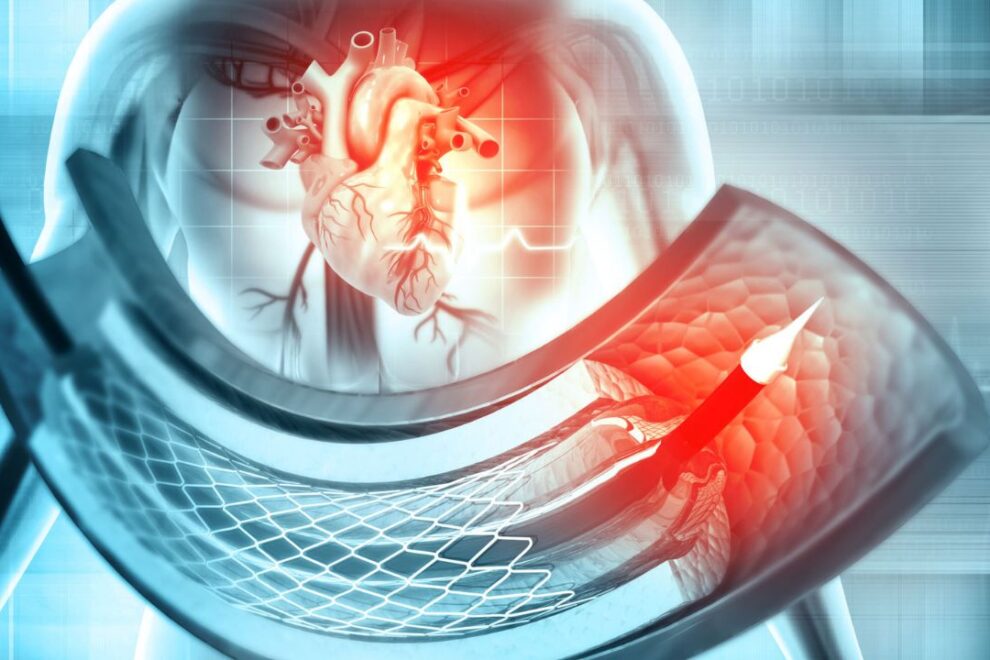PDA Surgery and Cost In India
So today’s article contains the info related to PDA surgery which is easily available in India. Additionally, PDA surgery in India is present at affordable cost with high success rates and is treated by expert surgeons. So to know the things in detail. Let’s start the article and discover PDA surgery!


Free Doctor Opinion
Before moving further. Let’s first understand the benefits of PDA surgery in India:
- Helps to get rid of symptoms like breathlessness.
- PDA closure ensures proper growth and good function of the heart and lungs in newborns.
- Reduces the chances of serious infections such as endocarditis.
- The PDA ensures the faster recovery and reduces the discomfort.
- The closure of the PDA ensures proper blood circulation.
Here’s why India is best for PDA surgery:
- Affordable cost of PDA surgery
- Very high success rate of PDA surgery
- Experience surgeons for the treatment of PDA
- Availability of various hospitals that provide PDA surgery
- Usage of advanced technology and equipment.
Signs and symptoms of PDA surgery in India
Patent ductus arteriosus leads to blood moving from the aorta into the pulmonary artery resulting in increased blood flow into the lungs. In terms of babies, this is usually well-tolerated but in the presence of the broad duct. The symptoms of heart failure can include irritability, sweating during feeds, and increased rates of respiratory distress. However, small PDAs do not have any serious symptoms. Infants may encounter certain signs including:
- Fast breathing of the baby
- Poor feeding habits Rapid pulse
- Shortness of breath in the babies
- Sweating while being fed
- Getting tired very easily
- Poor growth of the baby
Causes of PDA surgery in India
PDA effects are more seen in baby girls as compared to baby boys, as the condition is more visible in premature infants and individuals with neonatal respiratory distress syndrome. The causes of patent ductus arteriosus include the following:
- Mothers with a syndrome known as rubella, it’s a German measles during pregnancy.
- Babies with HLHS (Hypoplastic Left Heart Syndrome), TGV (Transposition of the Great Vessels) and Pulmonary Stenosis require the patent ductus arteriosus for survival.
Step-by-step procedure of PDA surgery in India
The following points will include the pre-operative assessment, medical procedure steps of PDA, post-operative care and the recovery duration:
Pre-operative assessments or tests:
The diagnosis of PDA can be confirmed with the help of a simple chest X-ray in the case of moderate to large PDA. Echocardiogram and EKG are the most important things that are helpful in the successful diagnosis of PDA. Hematocrit and oxygen levels are closely monitored before the surgery of PDA.
The procedure of PDA (patent ductus arteriosus):
- The patient is prepared for the surgery of PDA and consent from the patient is required for surgery & anaesthesia.
- oxygen saturation levels are monitored by placing Pulse oximeters.
- With the help of the NICU team, implanted ports are kept in place.
- A small incision or cut on the left side of the chest, damage is avoided to the muscles around the ribs. This step is performed within the fourth rib to access the area.
- Surgical ligation or division is the most common method used in premature infants to correct the PDA.
- The ductus is dissected with care so as to not injure the PDA, this is friable, especially in premature infants.
- The structures must be identified including the vagus nerve, left recurrent laryngeal nerve, and aortic arch.
- A medium or medium to large titanium clip for babies is used for PDA occlude.
- Most importantly, the clip must be tested outside the body before use as it is not possible to reposition or remove the clip once it is deployed. So it is essential to determine whether the clip is all the way around the ductus.
- At the discretion of the surgeon, a chest tube is placed. Depending upon the friability of the lungs and potential for air leaks.
- When it comes to older patients, PDA may be dissected or either controlled with a silk ligature or divided within polypropylene ligatures.
Post-operative care:
- For post-operative cardiac or surgical management, routine post-operative care.
- Effective pain management through sedation or anaesthesia.
- With the help of a chest X-ray, check for endotracheal tube position.
- For the risk of sepsis, antibiotics are used.
- For the hemodynamic shift from a high output state to a relatively lower output state, fluid and feeding monitor.
- Close monitoring of calculations helps in the early recognition of hypotension or hypertension.
PDA surgery cost in India
The PDA surgery cost in India ranges from 2.5 to 5.5 lakh depending on the needs of the patient. Its cost varies on the type and extent of the surgery. The surgeon’s experience, the hospital facilities, and the city from where you can get PDA surgery can also influence the cost of PDA surgery in India. The procedure of PDA surgery also affects the cost. Other factors like the location of the hospital, success rate of the centre, recognition and infrastructure charges, etc can add up to the cost of PDA surgery in India.
The following table helps you to know the cost of PDA surgery in different states of India:
State of India | Cost of PDA Surgery in India |
PDA surgery cost in Delhi | 2.5 to 5.5 lakh |
PDA surgery cost in Mumbai | 2.6 to 5.8 lakh |
PDA surgery cost in Hyderabad | 2.5 to 5.8 lakh |
PDA surgery cost in Kolkata | 2.55 to 5 lakh |
PDA surgery cost in Chennai | 2.3 to 5 lakh |
PDA surgery cost in Bihar | 2.4 to 5.6 lakh |
PDA surgery cost in Assam | 2.5 to 5.8 lakh |
PDA surgery cost in Rajasthan | 2.5 to 5.4 lakh |
PDA surgery cost in Punjab | 2.3 to 5.9 lakh |
PDA surgery costs in smaller cities | 2.4 to 5.6 lakh |
Factors affecting the cost of PDA surgery in India
PDA surgery cost in India is affected by several factors, including the selected hospital, location of the hospital, surgeons’ charges, consultation charges, the success rate of the treatment and hospital, the complexity of the case, pre-operative assessment, medical procedure charges, post-operative care, anaesthesia charges, medication charges, etc. The main factors that affect the cost of PDA surgery in India include the following:
Medical procedure and medication charges: the whole medical procedure of the PDA surgery is performed by the surgeon with the use of tools and needs the medications and drugs to treat the patients. Therefore, increasing the cost of PDA surgery.
Surgeon’s expertise: highly qualified and professional surgeons with a great number of experience and a wealth of skills and information charge more as compared to other surgeons.
The complexity of the procedure: if the case of the patient is serious or complex then additional services or medical procedures are required to treat the condition. Hence, an increment in the expense of PDA surgery in India.
Pre-operative assessment: the charges of pre-operative assessment are also included in the cost such as the simple chest X-ray, Echocardiogram and EKG so the cost of diagnosis of PDA is included.
Post-operative care: the care which is provided after the PDA surgery in India increases the expense as it includes the post-operative cardiac or surgical management, antibiotics charges, anaesthesia charges to reduce the pain, etc.
Hospital charges: These include the charges for facilities or services provided by the hospital, the success rate of the hospital, recognition and trustworthiness of the hospital, additional services offered by the hospital, location of the hospital, etc.
The success rate of PDA surgery in India
The success rate of PDA (patent ductus arteriosus) surgery is very high in India. Here, the success rate always exceeds 95%. The success rate varies on multiple factors including the patient’s overall condition, skills and expertise of the doctors, use of advanced technology, etc. Usually, the success date is based on the complexity of the case.
Why choose We Care India for PDA surgery in India?
We Care India is the best medical service provider in India. We take care of patients along with the healthcare provider team. Our medical team works 24*7 to handle medical cases. So feel free to contact us at any time, as our friendly medical staff will help you with your medical enquiry. Our highly qualified doctors work six days a week to diagnose your disease and assist you with the best treatments.
Moreover, our opening hours vary on different days. From Monday to Friday are different, Saturday timing is different and Sunday timing is different. Our trusted medical team offers personalised care. With the help of exceptional service, we ensure successful treatment. Our medical service provider centre is considered the top healthcare company that offers the best medications, treatment, surgical process, etc.
This centre comes with several treatments or surgeries such as PDA surgery, brain and spine, and cancer treatment. So this medical centre is to make your future bright like a moon. With 25 years of experience in the medical sector, we offer top-notch quality performance to patients struggling with any type of disease. Our centre has a speciality in PDA surgery. We offer the smooth treatment of PDA surgery.
Final thoughts – “Where There Is Hope, There Is Life”
In short, the article is about PDA surgery in India and we hope that this article will help you somehow. PDA surgery is a surgical treatment to close the ductus arteriosus, it’s a blood vessel that connects the pulmonary vein and aorta. So PDA surgery is used when the ductus arteriosus doesn’t close after the birth of the newborn, causing issues with blood flow to the lungs. In India, PDA surgery is performed under affordable budgets. Every individual struggling with ductus arteriosus problems can easily get PDA treatment. However, before getting the treatment, the individaul needs to select the centre that offers the high-quality treatment without any complications at reasonable prices.
FAQs (frequently asked questions)
How much does PDA surgery cost in India?
The PDA surgery cost in India falls under 5.5 lakh. However, the cost can fluctuate based on a number of factors such as the location of the centre, success rate charges, recognised centre’s advanced fees, medical procedure and medication charges, pre-operative assessment and post-operative care charges.
What is the success rate of PDA surgery?
The success rate of PDA surgery is above 95%. This high success rate varies on several factors including the complexity of the case, the patient’s overall health, surgeons’ expertise and experience, advanced technology or equipment use, etc. so in short, the success rate of PDA surgery is high in India.
What is the recovery period for PDA surgery in India?
Usually, the recovery period for PDA surgery in India is within a few weeks. Mostly, children or babies are back to their activities or normal life in a short period of time. However, knowing the exact time for recovery is a little bit difficult as every patient is different so their recovery time is also different.
Which country is best for PDA surgery?
India could be the best option for PDA surgery. The country offers the best quality treatment at an affordable cost and ensures a high success rate. In India, you can find several recognised hospitals that are equipped with experienced surgeons and use advanced technology.
Which hospital is best for PDA surgery in India?
We Care India is one of the best centres that offers PDA surgery in India. This centre has several facilities that can provide successful results, such as advanced technology, experienced doctors, and several years of experience. This centre ensures that you can live a happy lifestyle by keeping your body healthy.
Read Also :-
Committed To Build Positive, Safe, Patient Focused Care.
High Quality
Care
Home Review
Medicine
All Advanced
Equipment
Book An Appointment

At We Care India, we offer complete medical services for your entire family, from routine check-ups to injury care, ensuring personalized attention and expert assistance for all your health needs.


